All photos courtesy of Penobscot Marine Museum
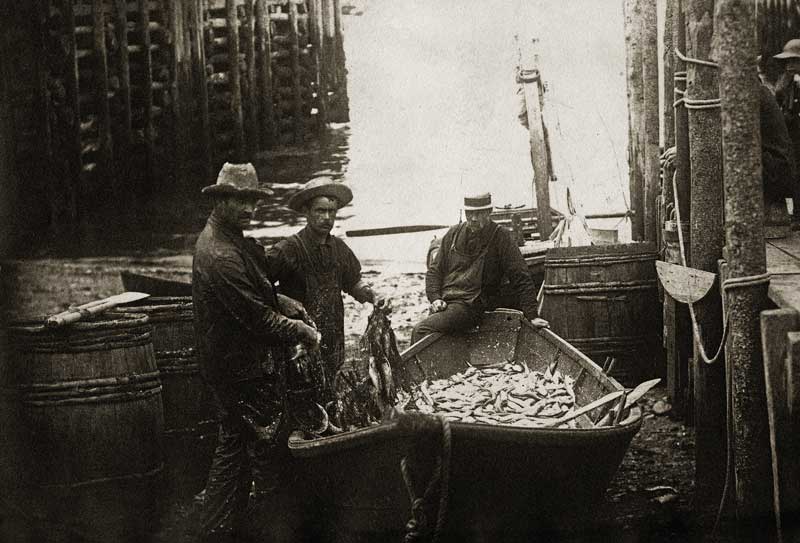
When the whistle blew, fingers flew. In eight minutes, Rita Willey packed 64 sardine cans and reclaimed her title as the World Champion Sardine Packer at the 1983 Maine Seafoods Festival in Rockland. It was her fifth trophy, including three straight wins, and came with a $1,000 cash prize.
Coming from the nearby town of Thomaston, Willey needed the prize money. The mother of four did not have daycare and occasionally had to bring her kids to work during her shift at the cannery. At the 1983 contest, Willey’s husband Lanny bragged his wife was so quick “she could turn off the lamp and get into bed before the room gets dark.”
“Friends claimed Willey could throw a 10-pound bag of potatoes in the air and have them peeled and diced before they hit the pan,” the late Bangor Daily News reporter Emmet Meara wrote in his contest coverage.
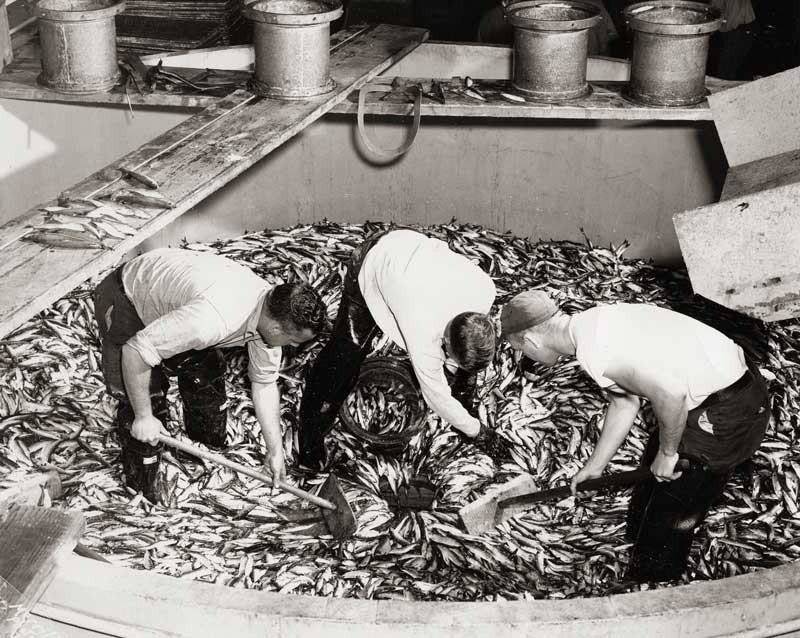
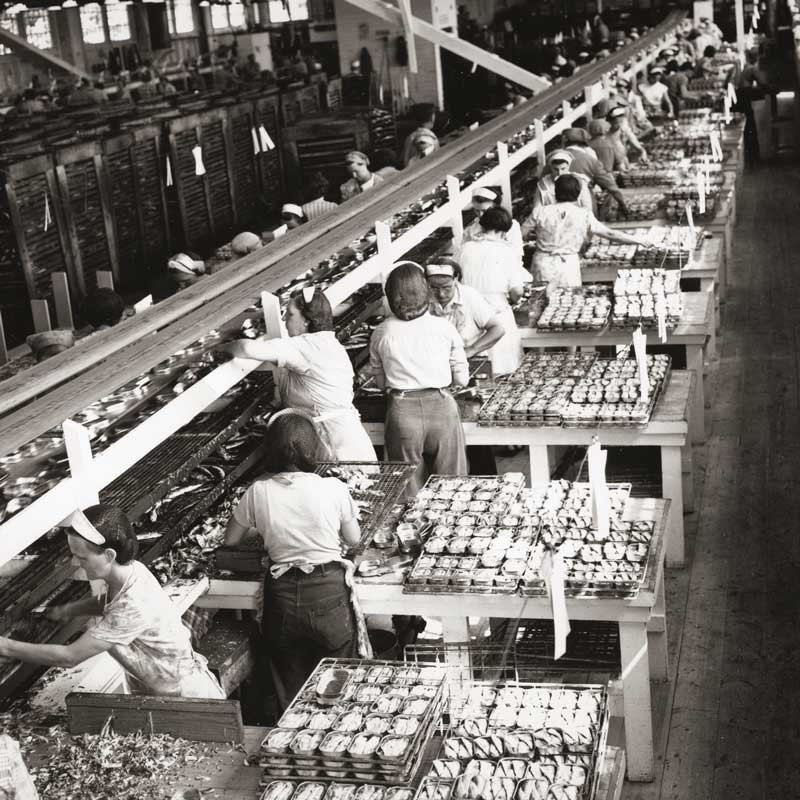
Willey is among thousands of Mainers who worked in myriad facets of Maine’s once burgeoning sardine industry. The fishery’s greatest catch surpassed 84 million metric tons in 1950. The Thomaston sardine packer, her arch rival Pat Havener of Friendship, and many generations of other workers figure prominently in Penobscot Marine Museum’s new “Sardineland” exhibit that opened this May in Searsport and runs throughout this season and all of the 2026 season, May to October. Plans include a Sardine Fest this coming Oct. 4, 2025.
“Sardineland” is PMM’s first exhibit covering all aspects of Maine’s sardine industry. The state once was home to 89 canneries from Eastport to Portland and sardines were the major source of income in coastal towns. Drawn from the museum’s rich photo collection, many of the compelling photos illustrating the show were shot by award-winning Finnish-American photojournalist Kosti Ruohomaa. Famous for his portraits of working Americans, the Life magazine photojournalist was hired by the Maine Sardine Council to document its industry in the 1950s. Marine images taken by Stonington’s Jeff Dworsky, Red Boutilier, Peggy McKenna, and Carroll Thayer Berry also are featured.
“It’s a universal story of a boom business that collapsed,” museum photo archivist Kevin Johnson said. He likens the fishery’s eventual crash to the rapid rise and fall of other finite natural resources such as coal and timber.
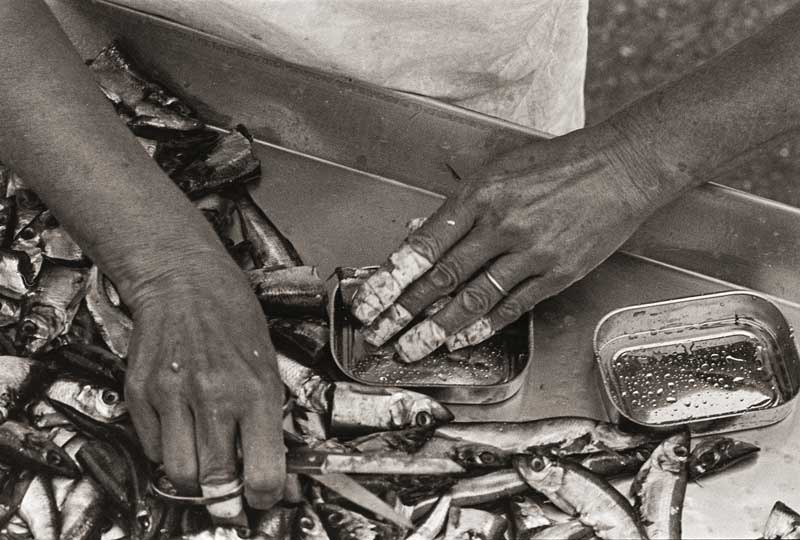
“Over the 135-year history of the Maine sardine industry, people handled herring from net, to can, to shipping carton. The process changed, and automation eliminated jobs, but through it all, it took human hands to make the final product,” wrote Cipperly Good, the museum’s Richard Saltonstall Jr. Curator of Maritime History. She researched the herring’s
journey from the ocean to wharf and the many hands and machines they passed through to produce canned sardines. In the digital montage, Good describes in layman’s language the many jobs in the canning process over a period that lasted from 1900 to roughly 2000. For instance, the cannery workers called “cutters” used scissors to snip off pre-steamed juvenile herrings’ heads, intestines and tails in order to fit usually nine to 12 juvenile herring per can. The “saucers” then added oil, spring water, or sauce to the can.
In “Sardineland,” visitors can view artifacts from Maine’s first refrigerated sardine carrier, the now-defunct Jacob Pike. The exhibit includes a digital slide show with photos of the boat and short film clips that include the Pike and other sardine carriers from the day. The Jacob Pike, which could carry over 90 tons of herring, was commissioned by Moses Pike for the Holmes Packing Co. of Rockland and named for his father. A sistership, the Mary Anne, was also built at the Newbert & Wallace yard in Thomaston. The Pike was launched in 1949, and the Mary Anne, a year earlier. The Jacob Pike was heavily damaged in 2024’s winter storms, and at last report was in a Portland salvage yard.
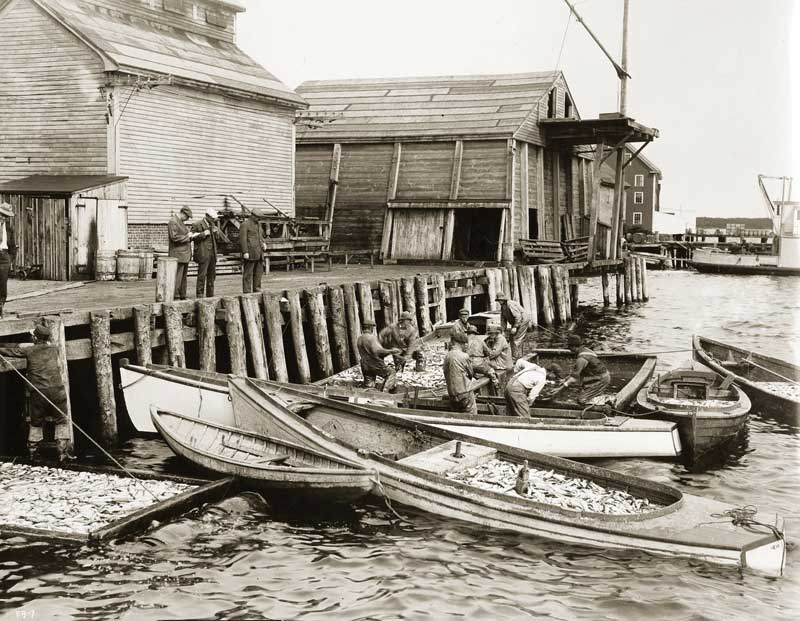
In preparation for “Sardineland,” PMM staff held listening sessions earlier this year in Belfast and Lubec to record former workers’ knowledge and memories. Those sharing recollections ranged from sardine packers to lobstermen who sourced herring bait from the canneries to a physician who treated injured workers. Their faces, voices, and recollections are woven into the show and bring the industry to life.
Anne Shure attended the Belfast session. During the 1970s, she worked for three summers at Stinson Canning Co.’s cannery in town. She remembers being paid a penny for every can she packed. The job made her want to go to college. Like other packers, she taped her fingers as protection from the sharp scissors, according to The Working Waterfront.
“I got carpal tunnel,” Shure said. “I’d have to sleep on my hands, because they would keep going [unconsciously].”
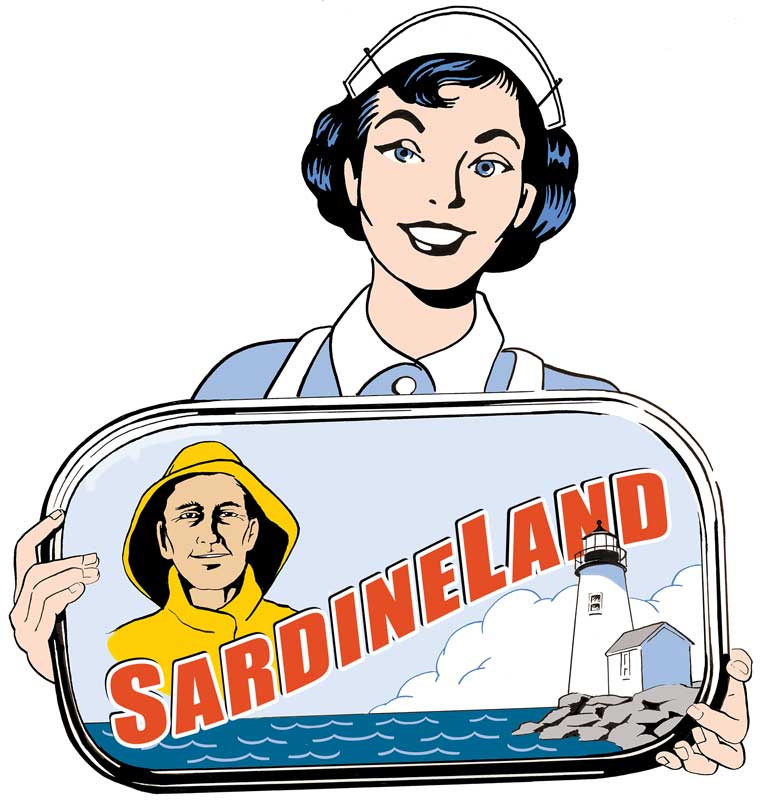 “Sardineland” chronicles the sardine industry’s decline following World War II when canned sardines had been an affordable, protein-rich staple for both troops and civilians.
“Sardineland” chronicles the sardine industry’s decline following World War II when canned sardines had been an affordable, protein-rich staple for both troops and civilians.
“Sardines were working-class lunches. You stuck them in your lunchbox and off you went,” recalled Maine food historian and writer Sandy Oliver, who lives on the Penobscot Bay island of Islesboro. While on the phone, Oliver fetched a 6.7-ounce tin of Bar Harbor Smoked Kippers from her 19th-century farmhouse’s pantry. She noted the canned smoked herring only has 205 calories and is a cheap source of protein and calcium that doesn’t require refrigeration.
Ironically, it was electric refrigeration that changed Americans’ lives and broadened their food options. Frozen fish sticks nudged aside the tinned product popular among older folks. Canned tuna’s popularity took a toll, too.
The U.S. fishery’s swift advances in technology to catch herring—from brush weirs to midwater trawlers—and an influx of foreign vessels greatly depleted stocks over time, culminating with Bumble Bee Foods’s 2010 closure of its factory in Gouldsboro’s Prospect Harbor. PMM has a display devoted to the last U.S. sardine cannery.
Besides the story of the industry’s demise, “Sardineland” also shows how Belfast, Portland, Rockland, and some other impacted coastal communities eventually were able to reshape and reboot their economies.
✮
Letitia Baldwin is a freelance writer who lives in the downeast towns of Gouldsboro and Cranberry Isles. She previously worked as the Arts & Leisure editor at The Ellsworth American and style editor at the Bangor Daily News.
About “Sardineland”
“Sardineland” runs through Oct. 11, 2025, at Penobscot Marine Museum in Searsport. In 2026, the exhibit will reopen in late May and close Oct. 26. Hours are 10 a.m. to 5 p.m., Tuesday through Saturday. Call 207-548-2529 or visit penobscotmarinemuseum.org. The logo for Sardineland (above) was designed by Norma Whitman.






